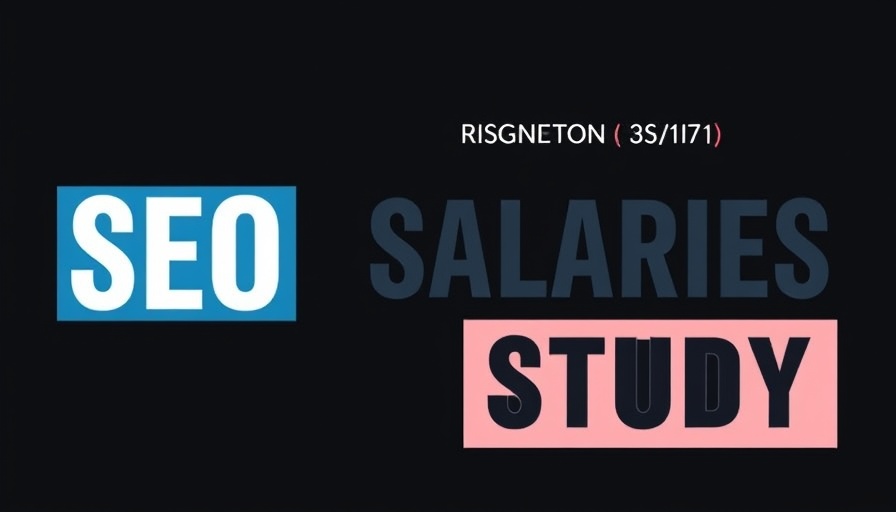
Unpacking PinkSEO's Remarkable Traffic Surge
The success story of PinkSEO’s collaboration with Children’s Allergy Doctors (CAD) is a testament to the potential of optimizing digital strategies within specialized medical fields. Achieving a staggering 288% increase in website traffic over a 14-month period, this case exemplifies just how technical SEO and tailored strategies can massively influence a business’s online presence. Many small business owners, particularly in high-stakes fields like healthcare, often encounter the dual challenges of fierce competition and the necessity of conveying expertise — a balance PinkSEO expertly navigated.
The Initial Challenge: Overcoming Low Online Visibility
Before partnering with PinkSEO, CAD contended with severely limited online visibility, ultimately hindering its ability to reach prospective patients. Boasting only 605 total keywords and a mere 6 ranking within Google’s top 5 results, the clinic had great services but struggled in reaching its audience effectively. This disconnect is not uncommon for small practices aiming to establish their virtual foothold, especially in service-intensive sectors such as medicine where personal connections and trust are paramount.
Transformation Through Technical SEO
PinkSEO, a London-based agency renowned for its expertise in technical SEO, was instrumental in addressing CAD’s digital hurdles. Through rigorous keyword optimization and structural enhancements, they elevated the clinic's keyword count to 1,473 and increased its top-ranked terms drastically to 17. The result? Organic web traffic skyrocketed from 317 visits to an impressive 1,663. These numbers not only demonstrate a tangible success story but also exemplify the shift that can happen when technical foundations of a website are professionally managed and optimized.
AI and Optimization Strategies in Action
In an era where artificial intelligence is continuously revolutionizing the marketing landscape, PinkSEO leveraged AI-powered tools not just for tracking keywords but for refining content strategies as well. This is a game-changer for small businesses looking to streamline their processes and maximize effectiveness. With capabilities to analyze vast amounts of consumer data and predict trends, AI tools enable businesses to target the right customers with the right message at the right time, driving both traffic and engagement.
Insights for Today's Marketers and Agency Owners
This case study serves as a beacon to marketers and small business owners alike, underscoring the importance of tailored SEO strategies. Taking time to assess and address specific technical issues—such as slow loading speeds, content optimization, and keyword misalignment—can unlock substantial growth. Agencies must evolve to incorporate AI-driven insights into their offerings, keeping pace with the rapid shifts in consumer behavior and technology use.
Future Predictions: The Direction of AI in Medical Marketing
Looking ahead, as AI continues to permeate various sectors, the field of medical marketing seems particularly ripe for innovation. Personalized patient experiences, enhanced online service offerings, and improved digital outreach tactics will likely become standard practice. This trend not only emphasizes the value of technical expertise in SEO but also highlights the necessity of agility and adaptability for small businesses as they plan for an increasingly digital future.
Making Changes for Sustainable Growth
As CAD demonstrated, engaging a specialized SEO agency can yield astonishing results, even amidst the complexities of a medical practice. For small business owners contemplating their marketing strategies, the key takeaway should be clear: resolve to invest in quality technical SEO services. The return on this improvement not only includes increased traffic but could also translate into meaningful patient relationships and even a solid reputation in the healthcare landscape.
By examining the effective story of PinkSEO and the Children’s Allergy Doctors, apply these insights to inform your own strategies. The rise in traffic and visibility is achievable through dedicated efforts and professional guidance. Construct your path to digital marketing excellence and reap significant rewards.
 Add Row
Add Row  Add
Add 




Write A Comment